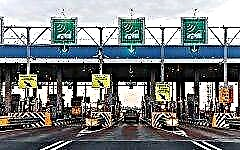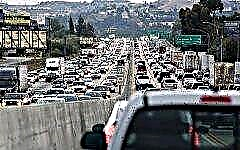
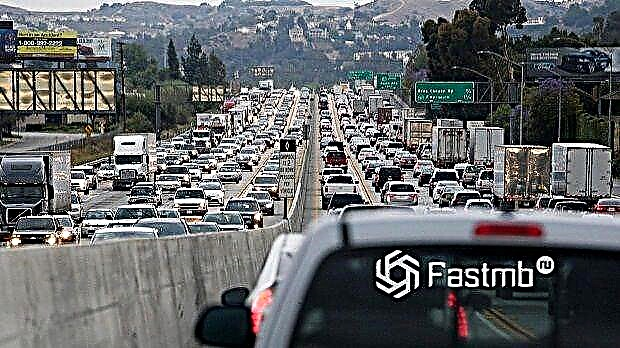
The content of the article:
- USA. Miami
- France. Paris
- USA. Atlanta
- Great Britain. London
- Brazil. Sao Paulo
- Colombia. Bogota
- USA. San Francisco
- USA. New York
- Russia. Moscow
- USA. Los Angeles
All Muscovites and Petersburgers are firmly convinced that these are the cities where the worst traffic jams in the world are. But they are wrong - the primacy in terms of the duration of standing and the length of traffic jams belongs to other cities in other countries.
The US-based analytical company INRIX has long been continuously monitoring 1,064 cities in 28 countries, excluding traffic in Japan and China. The main subject of the research was urban traffic, in particular, long multi-kilometer traffic jams.
True, the Center for Traffic Management of the Moscow Government was skeptical about the results of the rating, because American researchers took into account the traffic jams in the capital of Russia, without contacting the national center.
The widespread growth of traffic jams is caused by the rapid obsolescence of the road infrastructure, which was designed and built based on inaccurate data. No one could predict the total motorization of the population and the spasmodic curve of urbanization in all major cities of the planet.
The TOP-10 busiest cities on Earth are as follows.
10. USA. Miami

The average annual traffic jam in Miami is 65 hours.
The peak load on the road arteries reaches 40% (this is an indicator of the share of the total time that a person spends behind the wheel of a car). With the beginning of a new day, when people rush to work, this figure rises to a maximum of 60% by the end of the working day.
City highways are unable to cope with the flow of cars wanting to leave the downtown area and get home.
The American economy developed without major shocks, with dynamic urbanization of cities, with stable growth in employment and low gas prices. These factors led to a sharp increase in the purchasing power of the population and the acquisition of a huge number of cars by people. As a result, traffic jams have become an integral part of the American urban road network.
9. France. Paris
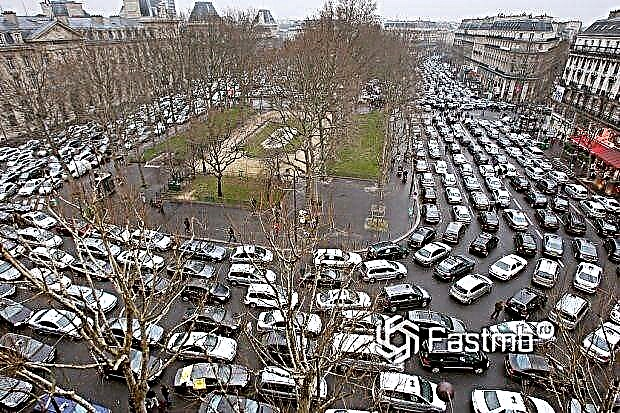
The average annual time spent in Parisian traffic jams, like in Miami, reaches 65 hours. In the morning, Parisians spend 39% of their time in traffic.
The Russians, who have been in Paris during rush hours, are sincerely perplexed by what the French are unhappy with - they do not have traffic jams, but ... the sidewalks are completely free.
The business center of Paris, La Défense, is built taking into account the peculiarities of the old streets outside the historic part of the city. In addition, a special metro line leads there, allowing to unload the traffic flow. But at the same time, Paris is recognized as the worst city in Europe in terms of traffic congestion.
Fighting for the environment, the Paris mayor's office made a number of serious mistakes, converting part of the streets into pedestrian zones and launching a tram line, reducing the capacity of roads.
8. Atlanta

The average annual traffic jam time in Atlanta has grown to 71 hours. The main traffic congestion times are from 6 to 9 am and from 4 pm to 7 pm.
Despite the fact that Atlanta has the widest six-lane highway in the world, the problems of traffic congestion are extremely urgent for this American city. Almost 330 thousand cars pass through the road junction of two highways lying within the city limits every day.
The intersection of highways 75 and 85 traffic flows is so busy that it is one of the top 10 busiest interchanges in the United States.
Atlanta is a fairly popular city that recently acquired the status of an international business center. Therefore, standing in traffic jams, businessmen calculated that such a "pastime" brings them losses of about $ 1,900. Losses for the city from the road collapse approached more than three billion dollars.
7. Great Britain. London
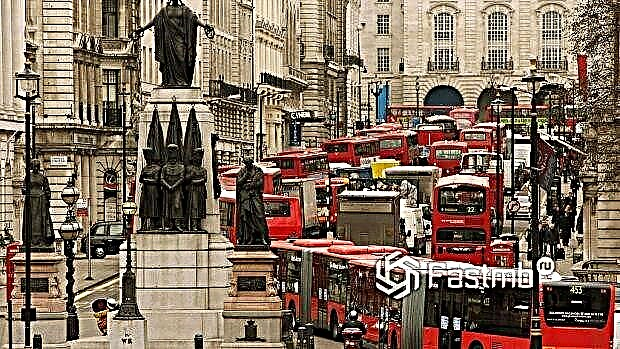
Londoners spend 73 hours in traffic jams.
The capital of Great Britain is a large European metropolis, within which there is an extensive and intensive transport network. The first road rules for cars, by the way, come from London at the beginning of the last century.
Despite the impending exit from the European Union, prices for various types of fuel remain low, while employment has increased, reaching a maximum over the past 11 years.
Everyone wants to buy a car, since it is available and is a symbol of prosperity, as a result of which the traffic density on the roads of London only increases, and congestions dissipate more and more reluctantly.
At the same time, the city hall is actively and effectively fighting the obstruction of traffic in the historical center of the city. The entrance to it was paid, and advertising and convenient public transport "transplanted" some Londoners working in the center to buses, subways, trams and bicycles.
6. Brazil. Sao Paulo
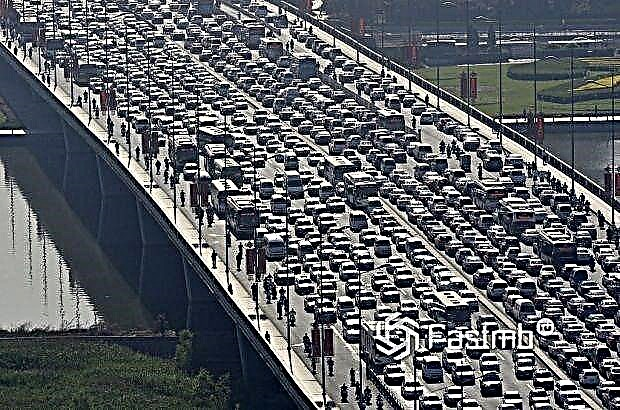
Lifetime lost in traffic jams in Sao Paulo every year is 77 hours, or 46% of travel time.
Brazil is notorious in the global cork rankings. Sao Paulo became famous for its persistent traffic congestion, as a result of which the city authorities had to implement a helicopter taxi service project so that citizens could get from the city center to the airport without hindrance.
All the efforts made by the City Hall, unlike London, are in vain. Sao Paulo leads the list of unpleasant cities to drive with dismal stability.
On one of the July days in 2009, a huge 293-kilometer traffic jam was recorded in the city, the largest in the history of the city. It was provoked by the mass departure of the townspeople out of the city on the eve of the celebration of the day of Corpus Christi, accompanied by a very heavy rain for many hours.
Based on the IRNEX ranking, the years go by and the road traffic in São Paulo is getting denser and denser.
5. Colombia. Bogota
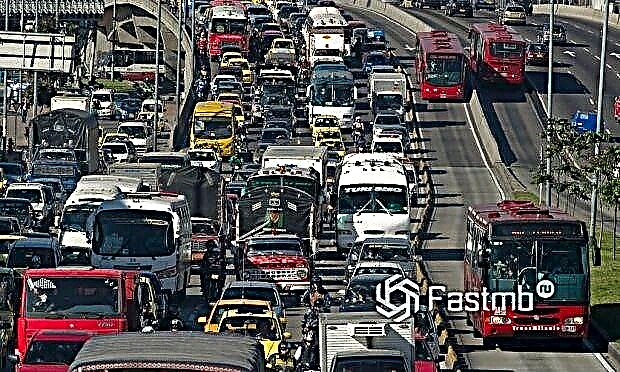
Stuck in traffic jams in the capital of Colombia, townspeople lose 80 hours a year.
Bogotá is a city where the splendor of old churches and ornaments on the roofs coexists with the length of the traffic jams. If you go to Bogota, aiming to explore its sights and visit the largest collection of gold jewelry in the Gold Museum, it is better not to use taxi services and car rentals. It is much easier and faster to get there by buses, for which there are special lines in the city, or on foot.
Traffic jams in the city occur at any time of any day of the week. Highways at the entrance to the city, the center and residential areas are especially critical. If you want to get somewhere, then the time should be allocated for the trip a maximum of twice as much as originally planned.
4. San Francisco

The time spent here by the townspeople in traffic jams is 83 hours.
City officials say San Francisco's traffic congestion is to blame for booming entrepreneurial activity and vastly expanding job search opportunities.
Traffic jams and heavy traffic have become an integral part of the special lifestyle of the townspeople. Therefore, most of them, having a license and cars, still prefer to use the developed network of public transport - metro, trams and buses, which make it easy to get anywhere within the city. Without a car, it turns out faster, and there is no need to look for parking.
Due to the specifics of the coastal position and the wind rose, the abundance of cars significantly affects the deterioration of the ecological situation in the city.
3. New York
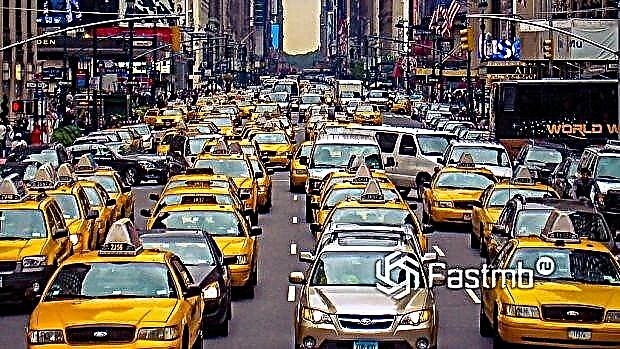
The time that New Yorkers waste in traffic jams has reached 89 hours a year.
The roads of the Big Apple are characterized by extremely heavy traffic. With the onset of summer, townspeople flock to the suburbs for a short weekend. More than two million residents are simultaneously trying to get out of the city, which inevitably leads to colossal traffic jams.
A small drop in the price of oil, saving up to 45 cents per gallon of fuel, convinced motorists of the financial benefits of using cars, which also boosted the number of cars on New York City's roads.
The hardest days for drivers are Monday and Friday. Desperate to get anywhere these days by car, the townspeople are forced to resort to public transport.
Traffic in New York is planned so that the driver is able to avoid traffic jams on parallel streets. The city authorities have also divided local traffic and transit traffic, taking it out of the city as much as possible.
The number of taxis has been significantly increased, there are many buses, and the metro network has been developed. There is a joke in New York that the main traffic jams in the city arise from the abundance of taxis.
2. Russia. Moscow
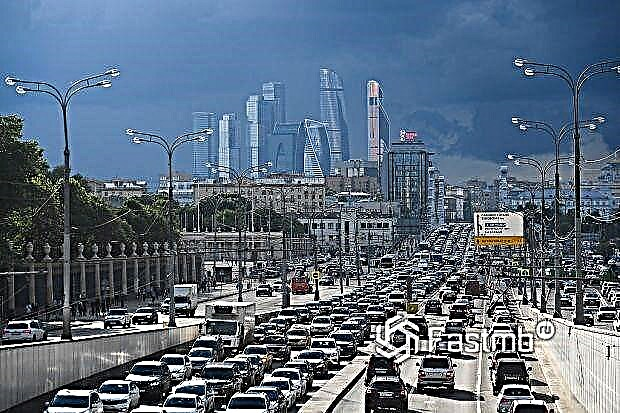
In traffic jams, residents of the Russian capital spend from 91 hours annually, and this time is only increasing, reaching 30% of the total duration of trips.
In the morning, the traffic monitoring service registers 106% congestion of highways, while in the evening the figure exceeds 138%.
Heavy rains and sudden heavy snowfalls occurring in Moscow can completely paralyze traffic on city streets, turning the Moscow Ring Road into a frozen stream of cars.
Moscow is a city that is not homogeneous in terms of road traffic. Difficulty in movement occurs from 7 to 10 in the morning and intensifies by 17-21 in the evening. The most difficult time in the warm season is Friday and Sunday evenings, when summer residents tend to leave the metropolis and get out into nature.
The most unpleasant traffic jams in the morning arise between the Moscow and the Third Ring Road. At the end of the working day, traffic jams in the center, from where all the cars are trying to leave, reach 8-9 points out of 10 possible.
The fastest highway in Moscow is the rebuilt section of the highway from Rublevo to Kutuzovsky Prospekt. Even at rush hour, the speed here does not drop below 34 km / h. Cars move the slowest on the Entuziastov highway, crawling at a speed of no more than 10 km / h.
1. Los Angeles
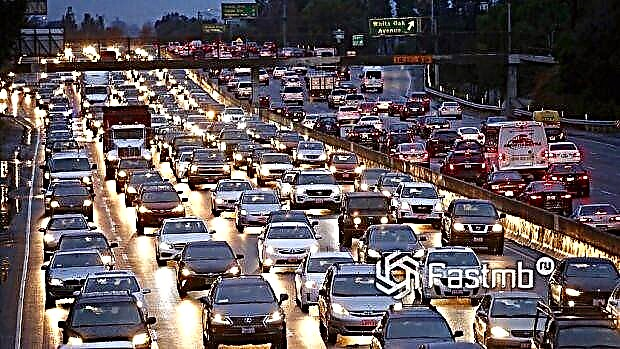
This city is a real headache for motorists. In traffic jams, residents of Los Angeles spend more than 104 hours a year - with a total population of "big" Los Angeles of 17 million inhabitants, this is quite predictable.
It is considered "normal" to waste precious time on the way to work and home - no one just goes anywhere. The level of congestion on city highways is only increasing. Over the past seven years, it has grown by 10%, forcing motorists to spend almost twice as long in traffic jams as they did in 2013.
Time spent on traffic jams takes $ 1,400 out of the pocket of motorists.
Conclusion
The increase in traffic jams and their increased duration reduces the quality of life and worsens the ecological situation. Car owners experience extremely negative emotions and spoil their health, standing for hours in a vain attempt to get somewhere on the road. This problem is common in almost all countries of the world, requiring urgent solutions from the city authorities.


